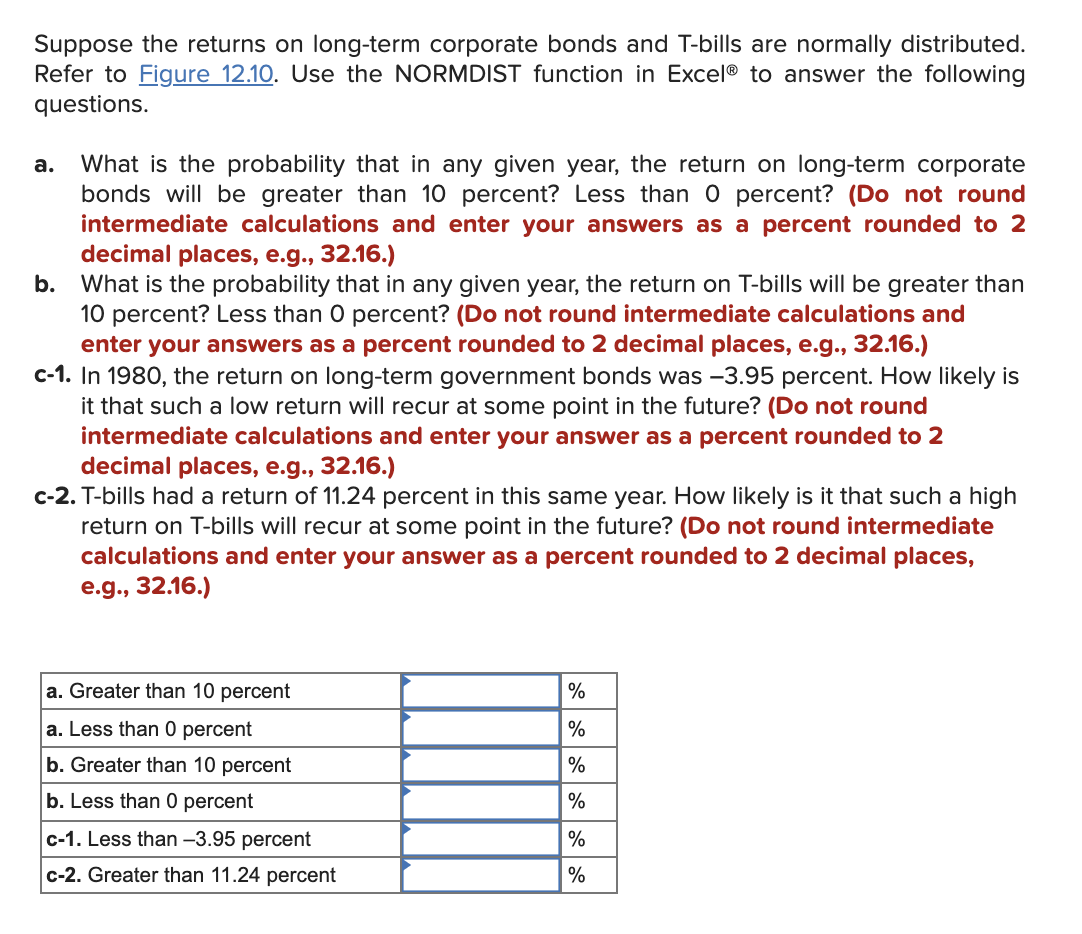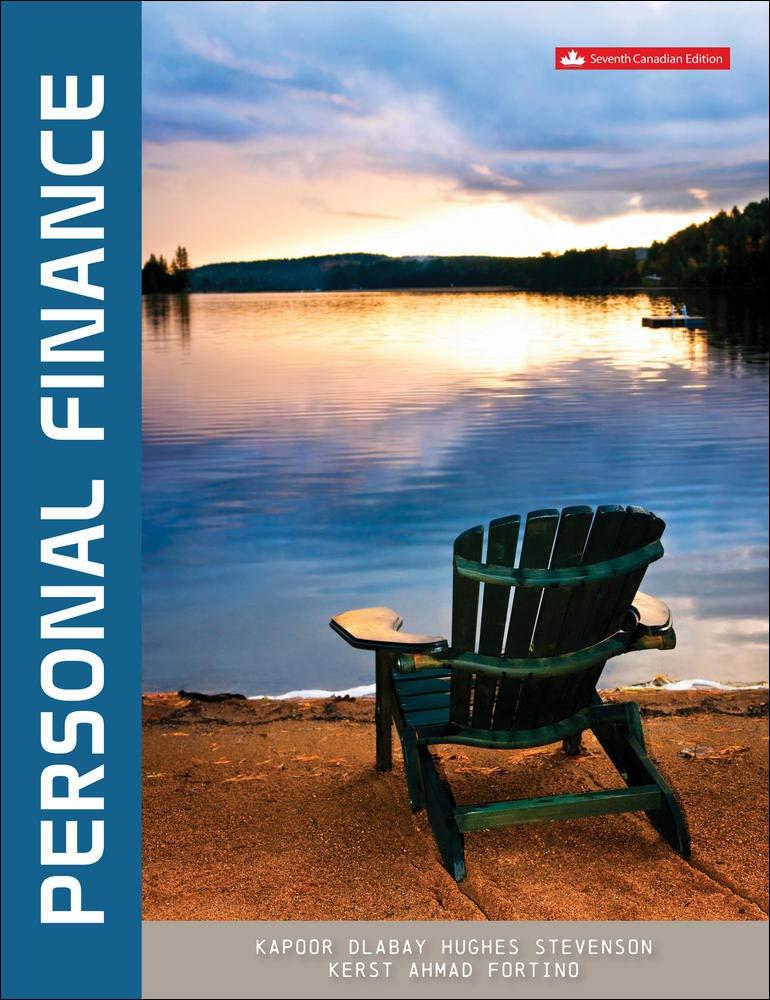
Suppose the returns on long-term corporate bonds and T-bills are normally distributed. Refer to Figure 12.10. Use the NORMDIST function in Excel to answer the following questions. a. What is the probability that in any given year, the return on long-term corporate bonds will be greater than 10 percent? Less than 0 percent? (Do not round intermediate calculations and enter your answers as a percent rounded to 2 decimal places, e.g., 32.16.) b. What is the probability that in any given year, the return on T-bills will be greater than 10 percent? Less than 0 percent? (Do not round intermediate calculations and enter your answers as a percent rounded to 2 decimal places, e.g., 32.16.) C-1. In 1980, the return on long-term government bonds was 3.95 percent. How likely is it that such a low return will recur at some point in the future? (Do not round intermediate calculations and enter your answer as a percent rounded to 2 decimal places, e.g., 32.16.) C-2. T-bills had a return of 11.24 percent in this same year. How likely is it that such a high return on T-bills will recur at some point in the future? (Do not round intermediate calculations and enter your answer as a percent rounded to 2 decimal places, e.g., 32.16.) a. Greater than 10 percent % % % a. Less than 0 percent b. Greater than 10 percent b. Less than 0 percent C-1. Less than -3.95 percent c-2. Greater than 11.24 percent % % % Suppose the returns on long-term corporate bonds and T-bills are normally distributed. Refer to Figure 12.10. Use the NORMDIST function in Excel to answer the following questions. a. What is the probability that in any given year, the return on long-term corporate bonds will be greater than 10 percent? Less than 0 percent? (Do not round intermediate calculations and enter your answers as a percent rounded to 2 decimal places, e.g., 32.16.) b. What is the probability that in any given year, the return on T-bills will be greater than 10 percent? Less than 0 percent? (Do not round intermediate calculations and enter your answers as a percent rounded to 2 decimal places, e.g., 32.16.) C-1. In 1980, the return on long-term government bonds was 3.95 percent. How likely is it that such a low return will recur at some point in the future? (Do not round intermediate calculations and enter your answer as a percent rounded to 2 decimal places, e.g., 32.16.) C-2. T-bills had a return of 11.24 percent in this same year. How likely is it that such a high return on T-bills will recur at some point in the future? (Do not round intermediate calculations and enter your answer as a percent rounded to 2 decimal places, e.g., 32.16.) a. Greater than 10 percent % % % a. Less than 0 percent b. Greater than 10 percent b. Less than 0 percent C-1. Less than -3.95 percent c-2. Greater than 11.24 percent % % %







